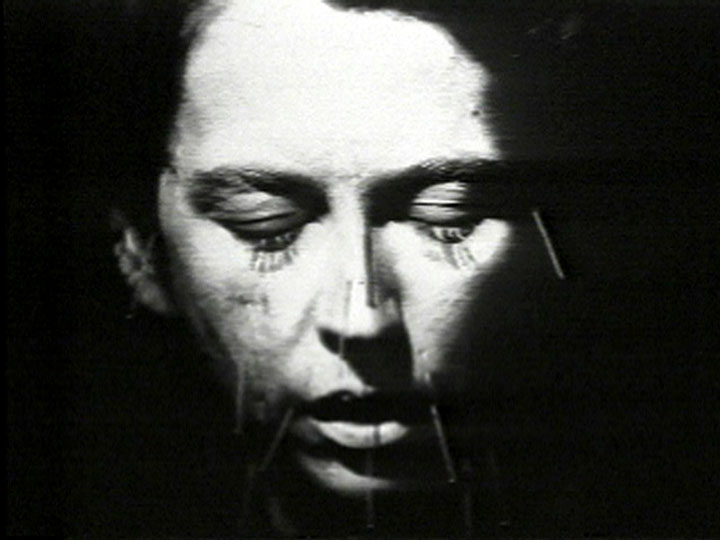Looking In the Mirror, I See Me
— Early Women’s Video Art from the Video Data Bank Collection
Wednesday 24 May 2017, 5 pm

To celebrate its 40th anniversary, Video Data Bank presents pioneering works by women artists of the 1970s.
It is already well established that the emergence of video art tools in the late 1960s and early 1970s paved the way for an extraordinary number of outstanding video art works by women. Captivated by the relative accessibility, portability and immediacy of Sony’s Video Porta Pak, a significant number of women artists were compelled to experiment with the video format. Often taking a direct-to-camera approach, many of the resulting works reflected the burgeoning feminist movement in the U.S. at the time.
Other fascinating tendencies can be traced: a claiming of the image of oneself in the face of the commercial world’s co-option of the female body; video as a means by which to directly comment on a world where, to a great extent, men called the shots; video as a tool through which to disrupt and question notions of originality, “truth”, and identity, via feedback, looping, and static; and last but not least, video as a vehicle for humour and parody, whether directly mocking aspects of society’s male hierarchy, or oneself.
The works in this program, all made by women artists active in the 1970s — video’s first decade — occupy a number of positions and points of view in relation to women’s role in society.
 Hermine Freed, Two Faces, 1972, 06:24, B&W, silent
Hermine Freed, Two Faces, 1972, 06:24, B&W, silent
 Lynda Benglis, Collage, 1973, 09:30, U.S., colour, mono
Lynda Benglis, Collage, 1973, 09:30, U.S., colour, mono
 Barbara Aronofsky Latham, Arbitrary Fragments, 1978, 12:44, colour, sound
Barbara Aronofsky Latham, Arbitrary Fragments, 1978, 12:44, colour, sound
 Suzanne Lacy, Learn Where the Meat Comes From, 1976, 14:20, colour, mono
Suzanne Lacy, Learn Where the Meat Comes From, 1976, 14:20, colour, mono
 Linda Montano, Mitchell’s Death, 1977, 22:20, B&W, sound
Linda Montano, Mitchell’s Death, 1977, 22:20, B&W, sound
 Susan Mogul, Dressing Up, 1973, 07:06, B&W, mono
Susan Mogul, Dressing Up, 1973, 07:06, B&W, mono
About Video Data Bank
Founded at the School of the Art Institute of Chicago (SAIC) in 1976 at the inception of the media arts movement, Video Data Bank (VDB) is a leading resource in the United States for video by and about contemporary artists. The VDB’s collection has grown to include the work of more than 600 artists and 6,000 video art titles. VDB is dedicated to fostering awareness and scholarship of the history and contemporary practice of video and media art through its distribution, education, and preservation programs. The collection is made available to museums and galleries, libraries and educational institutions, cultural institutions and alternative exhibitors through a far-reaching national and international distribution service. Programs and activities include maintaining both analog and digital archives, preservation of historically important works of video art, the commissioning of essays and texts that contextualize artists’ work, the publication of curated programs and artists’ monographs, and an extensive range of public programs, including the popular online streaming program VDB TV.
Abina Manning
Executive Director, Video Data Bank
January 2017
Program
Related pages
